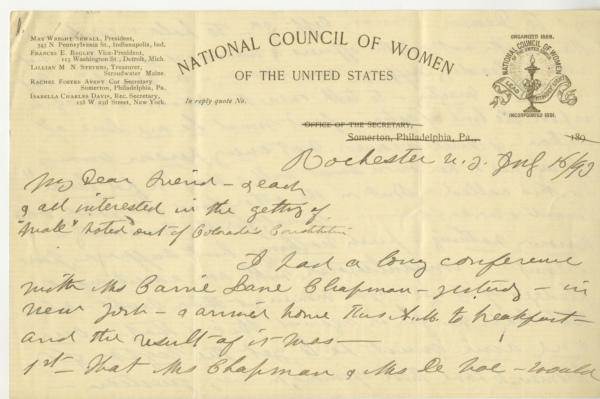Many libraries, archives and museums are supported by a volunteer workforce. During this time of social distancing many of these volunteers are looking for ways to continue to support the institutions they love. Digital volunteering is one way to do this while social distancing.
History Colorado is excited to share a project that people can do from home and make historic collections more accessible! Digital volunteers can help transcribe documents from well-known suffragists who fought to remove the barrier of gender discrimination at the polls.

The collection items available to transcribe, document the work of the 1893 Colorado campaign, showing the personal and professional relationships that national leaders such as Susan B. Anthony, Lucy Stone, and Carrie Chapman Catt built in Colorado to help Colorado suffragists campaign for the vote. Colorado led the way to women’s suffrage, becoming the first state to give women the vote by popular referendum in 1893.
How to Start:
- Visit the HC Digital Experiences page for tips and more info OR
- You can go straight to transcribing the collection
As a way to make collections more accessible, this work will create additional resources and knowledge about women’s suffrage and will have significant impact for researchers throughout the world. If you have questions about History Colorado’s Transcribing Women’s Suffrage in Colorado project, please contact Melissa de Bie, melissa.debie@state.co.us.
Other Digital Volunteer Opportunities
- The Colorado Historic Newspapers Collection (CHNC) has a text correcting interface built right into the online database. Three titles of particular importance to the history of Women’s Suffrage are: the Colorado Antelope, the Queen Bee, and the Woman Voter.
- Zooniverse, the transcribing platform used by History Colorado, offers access to many different types of projects built by institutions found throughout the world. Peruse their projects here.
- FromThePage, similar to Zooniverse, also offers access to digital volunteer projects. See their projects here, including one from the Colorado State University Water Resources Archive.
- It Takes a Village: New News for Weld and Pitkin Counties - June 26, 2025
- Socialism and a Denver Suburb: New Additions to CHNC - June 6, 2025
- 2025 Support for Newspaper Digitization - November 13, 2024